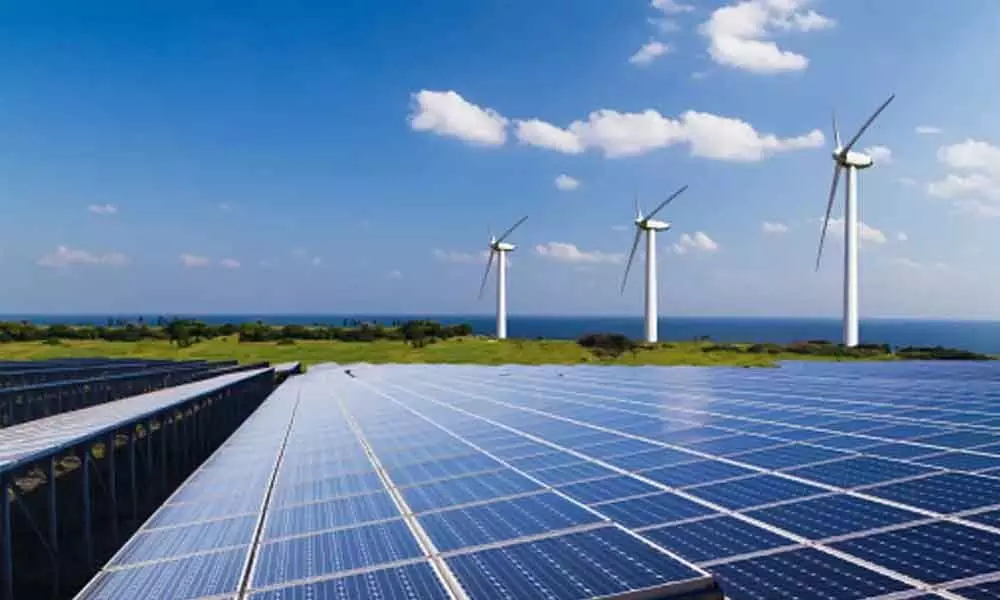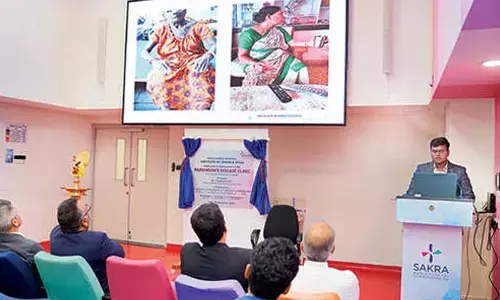Solar with standalone pump storage is the way forward

Solar with standalone pump storage is the way forward
The entire world is facing increasing onslaught of hurricanes, floods, droughts and diseases like Covid-19.
The entire world is facing increasing onslaught of hurricanes, floods, droughts and diseases like Covid-19. These appear to be a result of man's increasing intrusion upon the environment. One major source of this intrusion is the production of electricity. Large areas of forests are being cut for extracting coal; and flows of the rivers is being obstructed for the generation of hydropower. At the same time we need to generate electricity. Electricity consumption is often considered to be a measure of our standard of living. Therefore, we need to adopt an environment-friendly method of electricity generation.
The main sources of electricity generation in India are thermal power made from coal, hydro power made from the rivers and solar power mainly made in desert-like areas of Rajasthan and the Deccan. The difficulty with thermal is that we have limited sources of coal. Some estimates suggest it is sufficient only for 150 years. And the quality continued to deteriorate as more coal is extracted. We have to import coal in large quantities. In doing so we are transferring the negative impact of deforestation from India to Australia, but that is coming back to haunt us in the form of global warming. Further, about 900 grams of carbon is emitted in the production of one unit of electricity which adds hugely to global warming.
The second source of electricity is hydropower. It is generally considered to be clean because there is virtually nil carbon emission during production. However, the carbon emitted in the production of cement and steel used in the construction of hydropower projects is about 300 grams. Thus, the net saving of carbon emission is about 600 grams per unit which is substantial. However, hydropower leads to other environmental impacts such as drying of water sources and increased incidences of landslides due to the explosives used in making of tunnels; the harm to aquatic biodiversity because fishes are not able to migrate upstream because of the barrages; the erosion of our coasts because large dams arrest the sediments being carried by our rivers and deprive our coastal areas of the sediments that hold the land mass against the sea; and the deterioration of water quality of the rivers because it hits the blades of the turbines and the beneficent life forms in the water are damaged. Thus both thermal and hydro have problems and cannot provide a sustainable source of electricity to us.
A possible path forward is to promote solar power. The government has taken steps to increase the production of solar electricity and the same is increasing rapidly. More importantly, the cost of solar electricity today is about Rs 3 per unit against Rs 6 per unit for thermal and Rs 8 per unit for hydropower. The environmental impacts of solar power are also less. However, solar electricity is made only during the day. It is also unstable due to the movement of clouds that affects the generation. Therefore, we are unable to meet our requirements of electricity during the morning, evening and night from solar power.
A way out is to make "standalone" Pump Storage Electricity Plants. Two reservoirs are made at a higher- and lower elevation in these. The water is pumped from the lower- to the higher reservoir during the daytime when solar power is available. The water is released from the higher- to the lower reservoir through the turbines in the night when the electricity is needed. In this way, daytime electricity is converted into night-time electricity.
The existing hydroelectric projects can be converted into pump storage schemes. For example, Koteshwar hydroelectric project below Tehri Dam has been made to work as a pump storage. Water is pumped from the river to the Tehri Reservoir during the day and the same quantity of water is additionally released from the Tehri reservoir during the night. The cost of converting daytime electricity to nighttime electricity from such hydropower-cum-pump storage projects is merely 40 paise per unit according to S D Dubey of Central Electricity Authority. Thus daytime solar power can be converted to nighttime solar power and made available at a cost of about Rs 3.50 per unit which is much cheaper than thermal and hydro. However, we do not escape the environmental effects of hydropower in this arrangement. The project continues to obstruct the path of the river leading to the effects mentioned above.
The environmentally benign alternative is to make standalone pump storage project. In such projects two reservoirs are made at a location where they do not obstruct the path of the river. Separate turbines are established. The infrastructure of the existing hydropower project is not used. As a result the cost of conversion of daytime electricity into nighttime electricity will be about Rs 3 per unit in my estimate. A combination of solar and standalone pump storage can then provide us daytime electricity at Rs 3 from solar plants directly and nighttime electricity at Rs 6 after conversion leading to an average cost of solar electricity of about Rs 4.50 per unit. That is till significantly lower than the thermal electricity at Rs 6 per unit and hydropower at Rs 8 per unit. We will also be saved from the carbon emissions from thermal and environmental impacts of hydropower.
This arrangement can also help us manage the fluctuations in the demand of electricity. The great advantage of hydropower is that it can be switched on and off at the press of a button. Thus, grid managers ask hydropower projects to shut down when there is a sudden reduction in demand; and to start production when there is sudden increase in the demand. Last year Prime Minister Modi had asked the countrymen to switch off the lights for 10 minutes. That led to a sudden drop in the demand for electricity. The grid cannot handle this. It leads to collapse if electricity continues to be produced but is not evacuated from the grid. In such situations the hydropower projects are asked to switch off. The solar-cum-standalone pumps storage combination can provide such grid stability also. We cannot escape the wrath of nature if we continue to promote thermal and hydropower. The need of the hour is to freeze the construction of all new thermal and hydropower projects and move to solar-cum-standalone pump storage projects.
(The author is former professor of
Economics at IIM, Bengaluru)

















